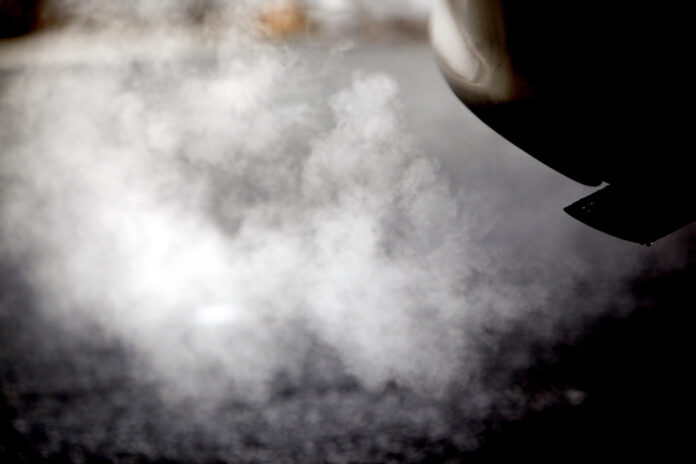(New York) The US government on Wednesday proposed tougher standards on car emissions, hoping to encourage manufacturers to integrate two-thirds of electric cars into their sales by 2032.
This goal goes beyond the ambitions unveiled two years ago by President Joe Biden to have half of the cars sold in the United States by 2030 be emission-free (electric, hydrogen) or low-emission (hybrid). rechargeable).
This time, the administration does not set a precise quota of clean vehicles for sale.
But the Environmental Protection Agency (EPA) plans to gradually restrict the average amount of polluting emissions from new vehicles produced by each manufacturer, encouraging them to increasingly electrify their fleets.
These new standards, now subject to public consultation, should avoid nearly 10 billion tons of CO2 emissions by 2055, more than double the emissions in the United States in 2022, estimates the EPA .
They “will help us meet our international commitments to fight the climate crisis while improving air quality across the country,” agency chief Michael Reagan said in a briefing. press conference.
It is “a key piece of the puzzle aimed at reducing our country’s biggest source of carbon pollution,” said Manish Bapna, head of the environmental organization NRDC, in a statement sent to AFP.
“If properly implemented,” these measures will also reduce oil imports and fuel expenses for motorists, he adds.
It will be up to manufacturers to choose which technologies they adopt to reduce their emissions.
In the past, they have been able to lighten their vehicles or improve the efficiency of their engine. They could adopt new particulate filters.
But insofar as many manufacturers are now well engaged in electrification, the agency is mainly counting on an acceleration of this movement: according to its calculations, with the new standards, electric vehicles could reach 67% of light vehicle sales ( city cars, sedans, SUVs, pick-ups) in 2032, 50% of sales of buses and garbage trucks, 35% of local transport trucks and 25% of long-distance transport trucks.
The slope is steep for manufacturers: even if their sales have increased significantly over the past two years, all-electric cars accounted for only 5.8% of vehicles sold in the United States in 2022, according to Cox Automotive.
We must rely on technological advances, noted Ali Zaidi, climate adviser at the White House, during a press briefing.
Moreover, in addition to the numerous public aids intended to promote the emergence of the electric car since the arrival of Mr. Biden to the presidency, the private sector has invested 120 billion dollars in the manufacture of electric vehicles and batteries, he argued: just observe “what is being built and how fast”.
For Arthur Wheaton, an automotive specialist at Cornell University, however, these ambitions come up against several challenges, the first being political: the standards can change with each new president, which makes “very difficult any long-term strategy” for businesses.
Manufacturers also continue to face problems in their supply chain.
For example, start-ups Rivian and Lucid are failing to meet their production targets.
And for the behemoths of the sector, transforming an entire production system, from building battery factories to modifying assembly lines, takes time. Electric cars still make up only a small portion of General Motors and Ford’s sales — and cost them a lot of money.
Manufacturers must also manage “the limited availability of raw materials” such as lithium, notes Mr. Wheaton, also referring to the need to modernize, and green, the electricity grid and install more charging stations.
“The question is not whether (EPA) goals can be met, but how quickly,” said John Bozzellale, president of the Automotive Innovation Alliance, which represents the automotive industry, in a statement. builders. This will depend on “the measures taken by the government and the conditions of the automotive market”, he noted.


















